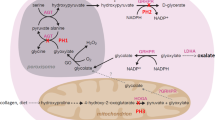Abstract
Background
Primary hyperoxaluria type 3 (PH3) is characterized by mutations in the 4-hydroxy-2-oxoglutarate aldolase (HOGA1) gene. PH3 patients are believed to present with a less severe phenotype than those with PH1 and PH2, but the clinical characteristics of PH3 patients have yet to be defined in sufficient detail. The aim of this study was to report our experience with PH3.
Methods
Genetic analysis of HOGA1 was performed in patients with a high clinical suspicion of PH after the presence of mutations in the alanine–glyoxylate aminotransferase gene had been ruled out. Clinical, biochemical and genetic data of the seven patients identified with HOGA1 mutations were subsequently retrospectively reviewed.
Results
Among the seven patients identified with HOGA1 mutations the median onset of clinical symptoms was 1.8 (range 0.4–9.8) years. Five patients initially presented with urolithiasis, and two other patients presented with urinary tract infection. All patients experienced persistent hyperoxaluria. Seven mutations were found in HOGA1, including two previously unreported ones, c.834 + 1G > T and c.3G > A. At last follow-up, two patients had impaired renal function based on estimated glomerular filtration rates (GFRs) of 77 and 83 mL/min per 1.73 m2, respectively.
Conclusions
We found that the GFR was significantly impaired in two of our seven patients with PH3 diagnosed during childhood. This finding is in contrast to the early-impaired renal function in PH1 and PH2 and appears to refute to preliminary reassuring data on renal function in PH3.


Similar content being viewed by others
References
Cochat P, Rumsby G (2013) Primary hyperoxaluria. N Engl J Med 369:649–658
Hoppe B (2012) An update on primary hyperoxaluria. Nat Rev Nephrol 8:467–475
Mulay SR, Kulkarni OP, Rupanagudi KV, Migliorini A, Darisipudi MN, Vilaysane A, Muruve D, Shi Y, Munro F, Liapis H, Anders HJ (2013) Calcium oxalate crystals induce renal inflammation by NLRP3-mediated IL-1β secretion. J Clin Invest 123:236–246
Belostotsky R, Seboun E, Idelson GH, Milliner DS, Becker-Cohen R, Rinat C, Monico CG, Feinstein S, Ben-Shalom E, Magen D, Weissman I, Charon C, Frishberg Y (2010) Mutations in DHDPSL are responsible for primary hyperoxaluria type III. Am J Hum Genet 87:392–399
Williams EL, Bockenhauer D, van’t Hoff WG, Johri N, Laing C, Sinha MD, Unwin R, Viljoen A, Rumsby G (2012) The enzyme 4-hydroxy-2-oxoglutarate aldolase is deficient in primary hyperoxaluria type 3. Nephrol Dial Transplant 27:3191–3195
Belostotsky R, Pitt JJ, Frishberg Y (2012) Primary hyperoxaluria type III–a model for studying perturbations in glyoxylate metabolism. J Mol Med Berl Ger 90:1497–1504
Monico CG, Rossetti S, Belostotsky R, Cogal AG, Herges RM, Seide BM, Olson JB, Bergstrahl EJ, Williams HJ, Haley WE, Frishberg Y, Milliner DS (2011) Primary hyperoxaluria type III gene HOGA1 (Formerly DHDPSL) as a possible risk factor for idiopathic calcium oxalate urolithiasis. Clin J Am Soc Nephrol 6:2289–2295
Jacob DE, Grohe B, Gessner M, Beck BB, Hoppe B (2013) Kidney stones in primary hyperoxaluria: new lessons learnt. PLoS ONE 8:e70617
Beck BB, Baasner A, Buescher A, Habbig S, Reintjes N, Kemper MJ, Sikora P, Mache C, Pohl M, Stahl M, Toenshoff B, Pape L, Fehrenbach H, Jacob DE, Grohe B, Wolf MT, Nürnberg G, Yigit G, Salido EC, Hoppe B (2013) Novel findings in patients with primary hyperoxaluria type III and implications for advanced molecular testing strategies. Eur J Hum Genet 21:162–172
Bacchetta J, Cochat P, Rognant N, Ranchin B, Hadj-Aissa A, Dubourg L (2011) Which creatinine and cystatin C equations can be reliably used in children? Clin J Am Soc Nephrol 6:552–560
Schwartz GJ, Muñoz A, Schneider MF, Mak RH, Kaskel F, Warady BA, Furth SL (2009) New equations to estimate GFR in children with CKD. J Am Soc Nephrol 20:629–637
Matos V, van Melle G, Boulat O, Markert M, Bachmann C, Guignard JP (1997) Urinary phosphate/creatinine, calcium/creatinine, and magnesium/creatinine ratios in a healthy pediatric population. J Pediatr 131:252–257
Barratt TM, Kasidas GP, Murdoch I, Rose GA (1991) Urinary oxalate and glycolate excretion and plasma oxalate concentration. Arch Dis Child 66:501–503
Cochat P, Hulton S-A, Acquaviva C, Danpure CJ, Daudon M, De Marchi M, Fargue S, Groothoff J, Harambat J, Hoppe B, Jamieson NV, Kemper MJ, Mandrile G, Marangella M, Picca S, Rumsby G, Salido E, Straub M, van Woerden CS, OxalEurope (2012) Primary hyperoxaluria type 1: indications for screening and guidance for diagnosis and treatment. Nephrol Dial Transplant 27:1729–1736
Pitt JJ, Willis F, Tzanakos N, Belostotsky R, Frishberg Y (2015) 4-Hydroxyglutamate is a biomarker for primary hyperoxaluria type 3. JIMD Rep 15:1–6
Riedel TJ, Knight J, Murray MS, Milliner DS, Holmes RP, Lowther WT (2012) 4-Hydroxy-2-oxoglutarate aldolase inactivity in primary hyperoxaluria type 3 and glyoxylate reductase inhibition. Biochim Biophys Acta 1822:1544–1552
Disclosures
PC is an expert and principal investigator for Oxthera company.
Author information
Authors and Affiliations
Corresponding author
Rights and permissions
About this article
Cite this article
Allard, L., Cochat, P., Leclerc, AL. et al. Renal function can be impaired in children with primary hyperoxaluria type 3. Pediatr Nephrol 30, 1807–1813 (2015). https://doi.org/10.1007/s00467-015-3090-x
Received:
Revised:
Accepted:
Published:
Issue Date:
DOI: https://doi.org/10.1007/s00467-015-3090-x




